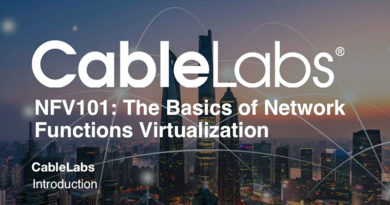Managing Through Change and Integration at Charter
By Tom Adams
Since the closing of the transactions with Time Warner Cable and Bright House Networks in May of 2016, we have been focused on successfully integrating our three legacy entities into a single unified company, with a centralized, well-proven operating approach that, under Tom Rutledge’s leadership, brought legacy Charter through a significant and successful transformation.
In order to establish legacy Charter as a leader and provider of choice for consumers the company needed to improve. We walked the entire network to determine the improvements that needed to be made to deliver best in class products and services. We went all digital, and put two-way interactive set-top boxes on every outlet. We launched the Spectrum brand providing more robust services with consistent pricing and packaging, and customer friendly policies. We significantly invested in our workforce. Increasing headcount as we insourced and needed to meet the needs of our growing company. And we provided our employees enhanced training and the tools necessary to deliver the highest level of craftsmanship at all times.
In a few short years, Charter became the fastest growing cable company in the U.S. thanks to our core strategy of delivering superior broadband and video products at highly competitive prices, supported by high quality customer service. We refer to this as the Charter Playbook and by executing this strategy across the combined assets, we expect to successfully grow the new Company.
We focus on our people. We have nearly 95,000 employees at Charter. The vast majority of those work in the field ops and care organizations interacting with our customers on a daily basis, and in many respects, shape public opinion of our company. The way a customer feels about our company is often dictated by their last interaction with us, and whether or not the level of service provided met their needs and expectations. Getting buy-in from those who interact with customers is essential. While there is often skepticism in the early stages of wide-ranging change, as success grows so does the adoption rate. Everyone wants to be a part of success.
Standardization is a vital aspect of integration. On the operations front, we have made meaningful progress in consolidating the financial control structure, as well as standardizing our business practices and processes. When the transactions closed there were 11 different legacy service environments. Today, we’re down to four, and we’ll be down to one at the end of this year.
By 2019, all of our customer care personnel will be working from a single virtualized platform with unified front-end for all sales, billing, provisioning, service, and retention efforts nationwide, allowing any one of our care personnel in any call center to handle customer calls from any location in our national footprint. We built our operating playbook to be so consistent across our footprint, with regards to training and tools, business rules and processes, product and packaging, branding, and operating metrics, that if a technician were to move from Los Angeles to Louisiana, the only thing that would be different would be the accent of their fellow employees.
While we continue through integration, we are also launching new services and improving the customer experience. We’ve rebooted our all-digital project to convert the significant portions of legacy Time Warner Cable and legacy Bright House Networks still carrying full analog video line-ups. We now offer minimum Internet speeds of 100 Mbps across 99% of our footprint. We’ve also launched Spectrum Internet Gig, our first DOCSIS 3.1 residential gigabit internet service, and by the end of this year we expect to offer Internet Gig to the vast majority of our 50 million passings.
Today, change is constant. Even when integration is behind us, change will still be all around us. We will be launching a wireless service this year, we are testing 5G technologies, and we will always need to be preparing for what’s next. Regardless of what tomorrow brings, when you have sound leadership, working with a proven successful strategy, and dedicated people on board throughout the organization, properly trained, and working together with the right tools, you are in a position to succeed.

Tom Adams
Executive Vice President,
Charter Communications
Tom Adams joined Charter Communications as Executive Vice President, Field Operations in 2012. Mr. Adams has national oversight of Field Operations for the company. Tom joined Charter from Time Warner Cable, where he spent 17 years and served as a Regional Vice President of Operations. Previously, he worked for NewChannels Corporation in various leadership roles including Vice President of New Business. Tom leverages his expertise on behalf of the industry as Vice Chairman of the SCTE•ISBE Board of Directors.


